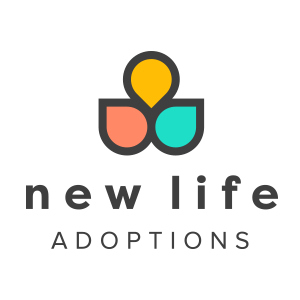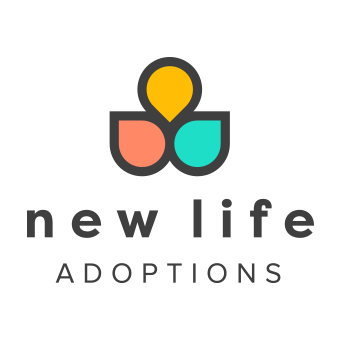What is suppression?
Suppression means you want to stop your milk supply. There are many reasons to want to stop the production of breastmilk whether personal or medical. Some reasons one may decide to stop producing milk may include: placing for adoption and having no desire to pump and provide breastmilk; baby is no longer living; you have chosen that breastfeeding or pumping is not the best journey for you and your baby; you are done breastfeeding your child. Regardless of the reason, here are some tips for reduction of milk and physical comforts during the process.
The key factors in suppressing milk supply is to firmly support your breasts and do not express milk, except a very minimal amount for comfort if necessary. Breastmilk works on a supply and demand basis, thus if the breastmilk is not being used, your body will take note, stop producing, and dry up.
Comfort Tips:
- Wear a firm, supportive, wireless bra both day and night. Think sports bra.
- Use cold compresses to the breasts for comfort. Avoid heat.
- When showering, avoid having the shower on your chest for long periods during the suppression phase as this can cause nipple stimulation and milk production.
- Avoid yeast infections and leaking through clothing by wearing nursing pads as you will likely leak breastmilk. Change the pad when wet.
- Stay hydrated. Cutting back on your fluid intake will not help you decrease your milk supply.
- Handle your breasts with care as they could be uncomfortable and bruise easily during this phase.
- When your breasts are overly engorged (too full), you can express a little milk by hand or with a pump. Express only enough to make yourself comfortable as your body will make milk to replace what you emptied out. Your goal is for your body to think it doesn’t need to make any more milk. So, don’t fully empty your breast! Smaller amounts are better at this point.
- While your breasts feel full, it can feel like a lot of pressure on your chest, especially when you are lying down in bed. Try lying on your side with a pillow supporting your breasts or on your back with extra pillows behind you. If you like sleeping on your stomach, place some pillows under your belly and hips to try and take some of the pressure off of your chest. Keep trying different positions, and know this is a phase that will pass.
- Cold green cabbage leaves have been known to help dry up milk and can be cooled for comfort; however, they can contain listeria bacteria which can lead to mastitis. Studies have also shown that cabbage leaves are not more effective than just using ice. **NOTE: CABBAGE IS NOT RECOMMENDED FOR USE BY ANYONE ALLERGIC TO SULFA OR CABBAGE.
- Applying fresh, crushed jasmine flowers directly to the breasts and areolas has been found to help decrease milk flow in some studies.
- Traditionally peppermint oil has also been used to assist in decreasing milk supply. One would have to drink quarts to a gallon of peppermint tea to see effects as peppermint tea is not very strong. However, women have reported success using strong peppermint candy like Altoids® Curiously Strong Peppermints and taking many throughout the day to get a high enough level of peppermint.
- Talk with your health care provider about what pain medications you can take and about the pros and cons of using a lactation suppression medication. They will be able to advise you best based on your health and your situation.
This post is part two in a three part series. Read part one here. Part three is coming soon!
Sources:
Australian Breastfeeding Association. (n.d.). Rapid weaning (lactation suppression). https://www.breastfeeding.asn.au/resources/rapid-weaning
KellyMom. (2018, January 2). Too much milk: Sage and other herbs for decreasing milk supply. https://kellymom.com/bf/can-i-breastfeed/herbs/herbs-oversupply/
Mitchell, K. B., Johnson, H. M., Rodríguez, J. M., Eglash, A., Scherzinger, C., Zakarija-Grkovic, I., Cash, K. W., Berens, P., & Miller, B. (2022). Academy of breastfeeding medicine clinical protocol #36: the mastitis spectrum, revised 2022. Breastfeeding Medicine, 17(5), 360–376. https://doi.org/10.1089/bfm.2022.29207.kbm
Yount, J. (2006). Common concerns – mother. Mother-2-Mother. http://www.mother-2-mother.com/motherconcerns.htm#engorgement
About the Author:
 Amanda Little, RN, CLC, has been a nurse for 14 years. Ten years of which have been in the Postpartum Unit, Labor and Delivery Unit, and Level 3 NICU at Mayo Clinic, in Rochester, MN. She has now been at First Care Pregnancy Center, in Rochester, MN for 3 years. She achieved her Certified Lactation Counselor Certification in 2014 and has more than 10,000 hours of hands on lactation support experience. Amanda was recognized with the Mayo Clinic Nursing Individual Achievement Award in 2019 in the Department of Obstetrics, Gynecology, and Neonatology Specialties at Mayo Clinic, in Rochester, MN. Amanda has also been a Perinatal Educator since 2020. Amanda has a passion to support all woman and families through the pregnancy, birthing, parenting, lactating, adoption, grieving, healing, and growing stages of life. Amanda also loves to be an “Auntie” to many children in her community and church.
Amanda Little, RN, CLC, has been a nurse for 14 years. Ten years of which have been in the Postpartum Unit, Labor and Delivery Unit, and Level 3 NICU at Mayo Clinic, in Rochester, MN. She has now been at First Care Pregnancy Center, in Rochester, MN for 3 years. She achieved her Certified Lactation Counselor Certification in 2014 and has more than 10,000 hours of hands on lactation support experience. Amanda was recognized with the Mayo Clinic Nursing Individual Achievement Award in 2019 in the Department of Obstetrics, Gynecology, and Neonatology Specialties at Mayo Clinic, in Rochester, MN. Amanda has also been a Perinatal Educator since 2020. Amanda has a passion to support all woman and families through the pregnancy, birthing, parenting, lactating, adoption, grieving, healing, and growing stages of life. Amanda also loves to be an “Auntie” to many children in her community and church.




